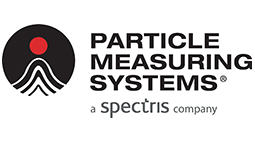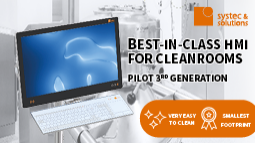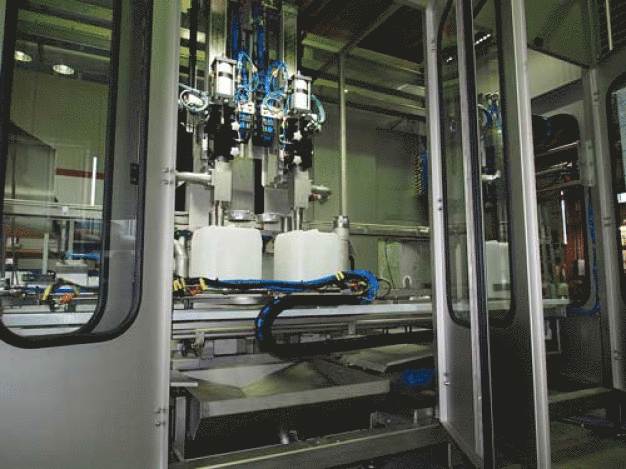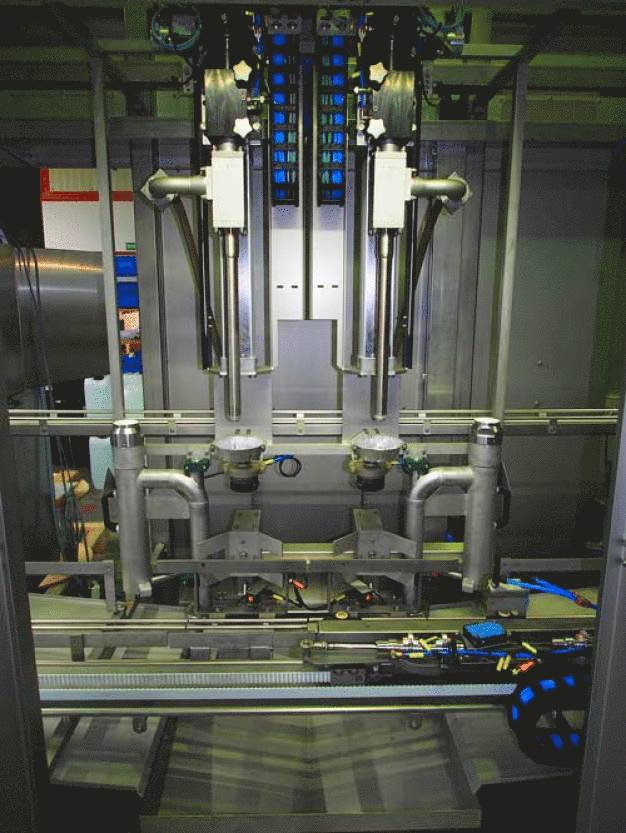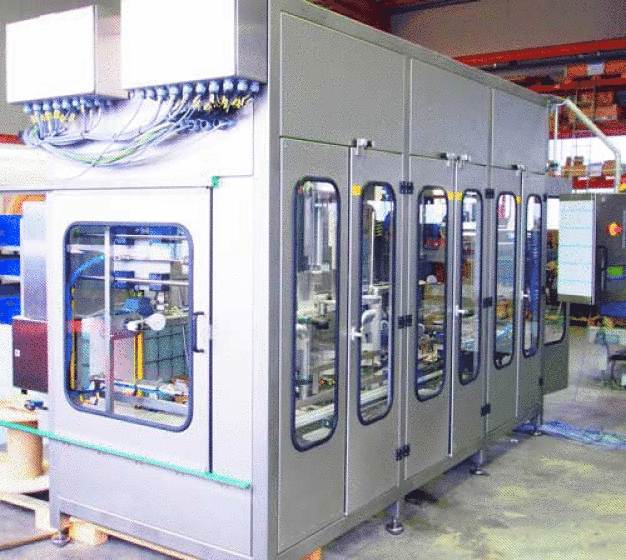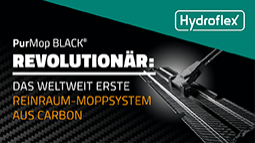Canister filling for the pharmaceutical industry: 200 units per hour
SMB creates innovative canister filling system with dual filling station in a cleanroom
Minimum space usage, a fast filling cycle, simple yet effective cleaning and filling under cleanroom conditions: these were the specific requirements stipulated by the pharmaceutical client for SMB International GmbH prior to the design and manufacture of a new canister filling system.
To realize the project, the material handling specialist based in Quickborn near Hamburg designed two parallel-operating filling stations to replace the existing facility. The filling performance enables an output of 200 canisters per hour (each with a capacity of 25 litres). “The filling system cubicle is made entirely of stainless steel, which we equipped with sliding and double-wing doors in order to fully utilise the space,” explained SMB CEO Andreas Heckel “While assembling
the system in the plant we also had to be careful not to block any neighbouring evacuation route, because the filling process is only supervised by a single operator.”
The canisters are initially centralised at an upstream filling station. To meet the high turnover during the filling process, four cleaned and closed canisters are simultaneously transported together on apron conveyors. The canister caps are effectively screwed off and placed upon a cap conveyor. The canisters are then moved from the uncapping point to the subsequent ‘filling’ and ‘capping’ stations. Throughout the whole process, the canisters are transported on round, stainless steel rods that enable simple yet effective cleaning. Conveying is carried out by four pneumatic swivel catches mounted on a linear slide.
The spillage trays swivel to the side, two filling lances are lowered simultaneously into a pair of open canisters and the filling valve is opened. During filling the lances are raised via weight control, with both stations consequently equipped with a single-point weighing cell, the calibration of which was supervised by SMB. Shortly before completion of the filling process, immersion filling occurs, whereby the product is filled using a fine stream.
High-tech, integrated cleaning process
When the filling process for a batch is complete, both filling lances are cleaned in place (CIP). Two rinsing receptacles are manually swivelled under the lances, which are then cleaned in hot water. The main control system is notified of the lance rinsing process via a switching signal and the filling process is initiated once more, but only after the air in the filling cubicle has been completely exchanged via a cleanroom ventilation device.
SMB International GmbH
25451 Quickborn
Germany
